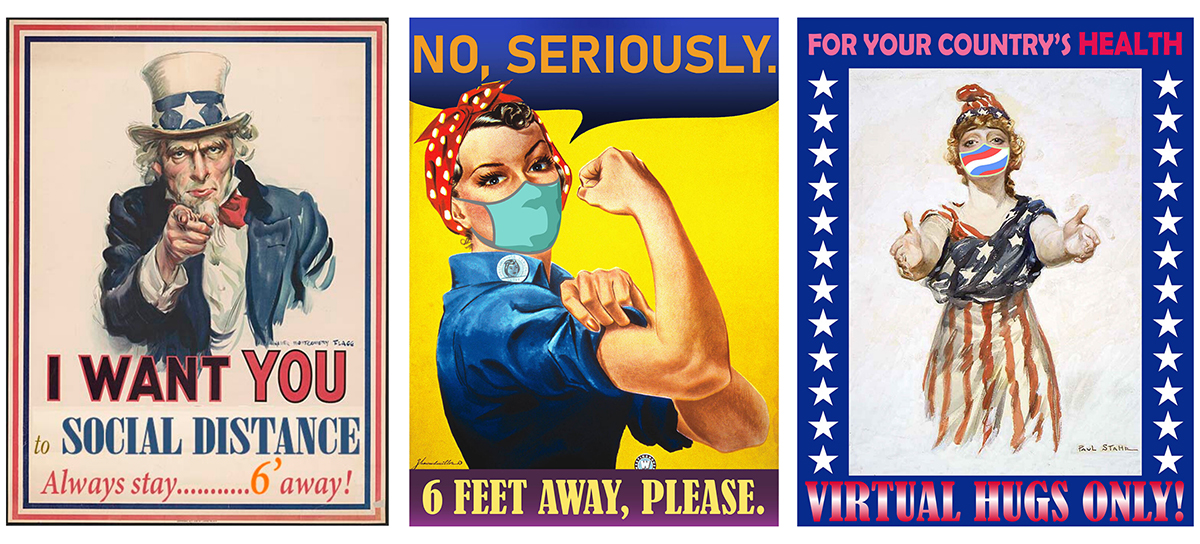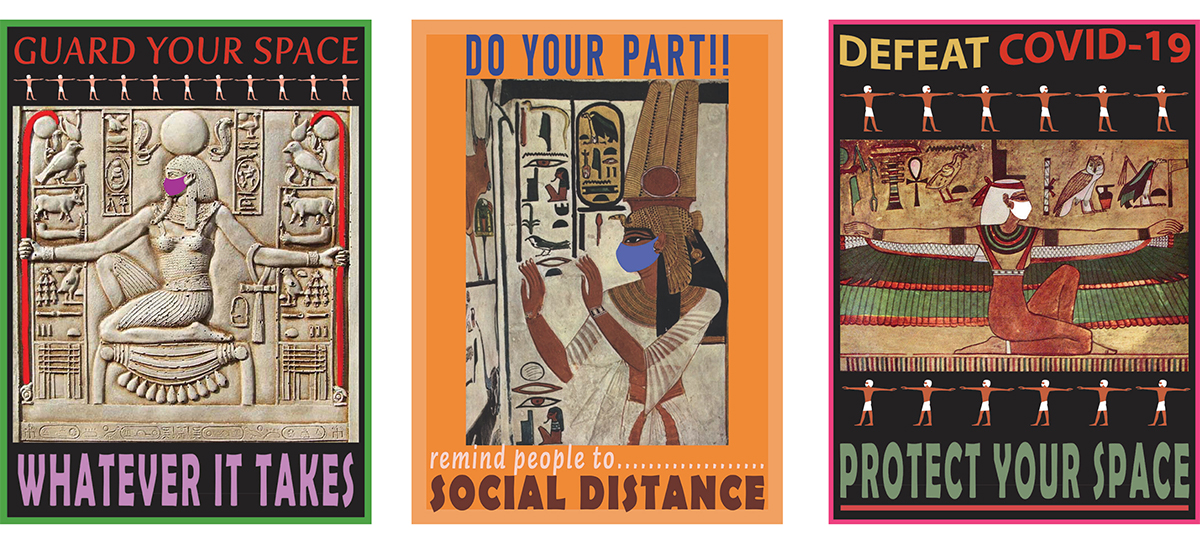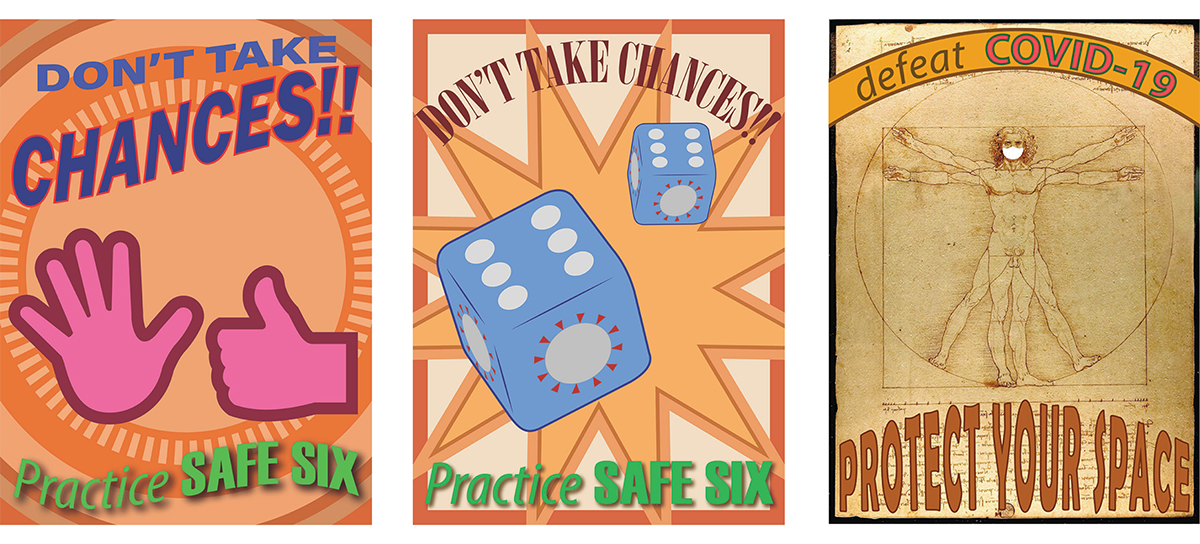
You’ve not seen shelter-in-place posters like these before.
Amitabh Verma, associate professor at the CED, has long advocated for the power of art and design to combat stress and anxiety. During the recent pandemic, Verma has turned his talents to a new kind of art: posters to promote shelter-in-place guidelines, mask wearing, and other safe practices.
There is no shortage of public awareness campaigns from businesses, local governments, and health care agencies like the WHO and CDC. Each campaign usually promotes the same kinds of practices, but are not as efficient nor compelling as they could be since they rely heavily on text instead of images.
Verma is seeking to change that. By injecting humor and relying on graphics rather than text (for the most part), Verma’s recent gallery of posters encourages healthy living while breaking tradition from other campaigns whose graphic design can become stale.

The posters modify well-known imagery like Rosie the Riveter, da Vinci’s Vitruvian Man, and Egyptian hieroglyphs to communicate a modern message with a classic flavor. In a way, Verma has assembled an Avengers-like cohort of public figures and aimed them all toward a message of healthy living.
Each poster provokes a different reaction based on its cultural context. Rosie the Riveter has always been a symbol for empowerment and dedication to national prosperity. Vitruvian Man has long evoked medical advancement and the pursuit of knowledge. The posture of figures in Egyptian hieroglyphs is strong, deliberate, and dignified… even while wearing PPE.
Additionally, the great diversity in style and graphics enhance the series’ ability to speak to several distinct demographics. The posters don’t look the same because we don’t look the same. The end result is a humorous series of images that communicate a critical message in a new, fresh way to a wide range of people.

Read more about Verma’s artistic pursuits during the pandemic in this story, where he translates our current struggle into a medieval context, drawing upon classic imagery of heroes toppling ancient evils.

